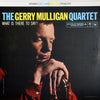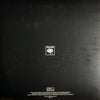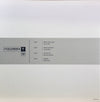









Gerry Mulligan Quartet – What Is There To Say? (2LP, 45RPM, Number 0208)
Rarity Sealed
Baritone Saxophone – Gerry Mulligan
Bass – Bill Crow
Drums – Dave Bailey
Trumpet – Art Farmer
Written by Vernon Duke, E.Y. "Yip" Harburg (A1), Betty Comden, Adolph Green, Jule Styne (A2), Gerry Mulligan (B1, C1, D2), Lorenz Hart, Richard Rodgers (C2), William Crow, Art Farmer (D1)
2LP, gatefold jacket
Limited numbered edition (Number 0208)
Original analog Master tape : YES
Heavy Press : 180g
Record color : black
Speed : 45RPM
Size : 12'’
Stereo
Studio
Record Press : Record Technology Incorporated
Label : Original Recordings Group (ORG)
Original Label : Columbia
Recorded Dec 17, 1958–Jan 15, 1959
Produced by Teo Macero
Mastered by Bernie Grundman
Originally released in 1959
Reissued in 2011
Tracks:
Side A:
1. What Is There To Say?
2. Just In Time
Side B:
1. News From Blueport
2. Festive Minor
Side C:
1. As Catch Can
2. My Funny Valentine
Side D:
1. Blueport
2. Utter Chaos
Reviews :
“The last of the pianoless quartet albums that Gerry Mulligan recorded in the 1950s is one of the best, featuring the complementary trumpet of Art Farmer, bassist Bill Crow, and drummer Dave Bailey along with the baritonist/leader. This recording is a little skimpy on playing time but makes every moment count. Virtually every selection is memorable, with "What Is There to Say," "Just in Time," "Festive Minor," "My Funny Valentine," and "Utter Chaos" being the high points. Highly recommended both to Mulligan collectors and to jazz listeners who are just discovering the great baritonist.” Allmusic review by Scott Yanow.
Gerry Mulligan (born April 6, 1927, Queens Village, Long Island, New York, U.S.—died January 20, 1996, Darien, Connecticut) was an American baritone saxophonist, arranger, and composer noted for his role in popularizing “cool” jazz—a delicate, dry, understated approach to jazz style.
Mulligan showed strong musical instincts from his early youth. He played piano and wind instruments with a number of small musical ensembles throughout his school years. Leaving school in 1944, he worked with a number of bands, most notably with Gene Krupa’s big band (1946), as an arranger. Shortly after that, Mulligan became involved in a movement to develop a different style of jazz, known as cool jazz. He also had begun to specialize in baritone saxophone and to perform live and on recordings with groups led by such musicians as Miles Davis, Kai Winding, Elliot Lawrence, and Claude Thornhill. In 1952 Mulligan formed his own quartet, which included Chet Baker on trumpet. The group, notable for its lack of a pianist, brought international acclaim to both Baker and Mulligan. During the following decades Mulligan continued to work as a freelance arranger, formed groups varying in size from 4 to 20 (including the 13-piece Concert Jazz Band of the 1960s), and played throughout Europe and the United States and in Japan. He is considered to have been a versatile musician, equally comfortable with many styles of jazz, and one of the more important baritone saxophonists in the jazz idiom.
Ratings :
Discogs : 4.56 / 5 ; Encyclopedia of Popular Music :5 / 5 ; AllMusic : 5 / 5 ; The Penguin Guide to Jazz Recordings : 4 / 4




